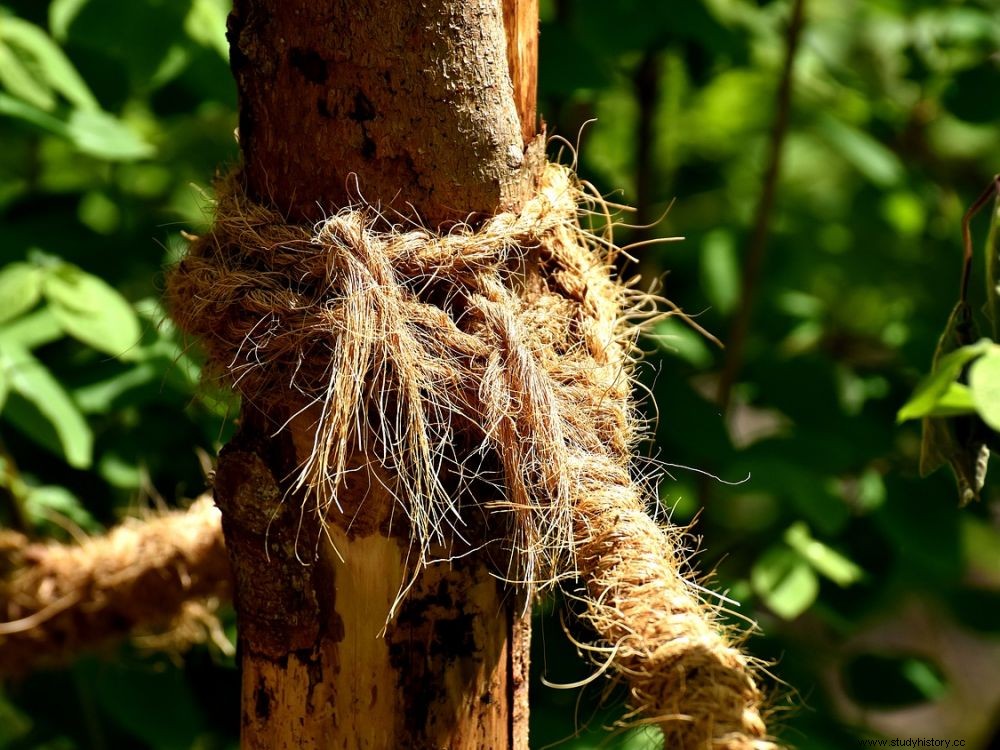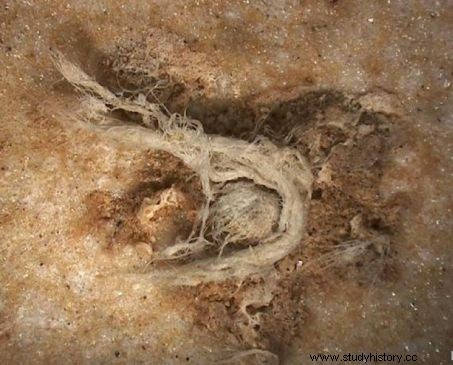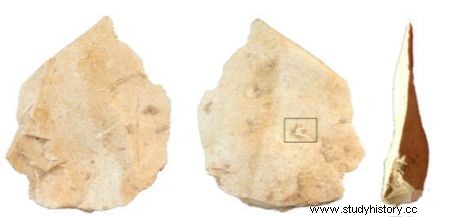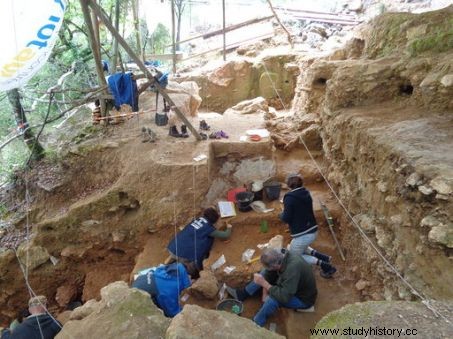Unearthed for the first time, 42,000-year-old rope remains prove that our prehistoric cousin had more than one string to his bow...cognitive.

Copy of rope to illustrate the recent discovery of rope residues produced by Neanderthals.
It was autumn, and the herds of reindeer would soon arrive. Like any good hunter, Neanderthal prepared his equipment. He anticipated. In doing so, he rolled between his powerful fingers several plant stalks torn from the fleshy part of a tree trunk, just under the bark. And this in order to soften them in order to be able to braid them. A good rope would always come in handy! This is the first evidence of rope use by Neanderthals that has just been published in the journal Scientific Reports , under the direction of Marie-Hélène Moncel, CNRS research director (UMR-7194), prehistorian at the National Museum of Natural History (MNHN), in Paris.

Fragment of twisted rope photographed with a scanning electron microscope (SEM/MNHN). © Marie-Hélène Moncel et alii
The team of scientists she leads discovered these plant residues trapped in a small breach (hardened sediments), during scanning electron microscope (SEM) examinations. Microfragments preserved on the cutting edge of a flint flake found in the stratigraphic layers of the Maras site, in Ardèche. In this rock shelter overlooking the Rhone Valley, the many remains abandoned by this distant cousin between 90,000 and 40,000 years ago have been studied with the meticulousness of goldsmiths for more than 15 years. "This element of cordage made of cellulose came from a conifer. We were able to establish it thanks to a spectrometric examination. This confirms the great knowledge that Neanderthal had of wood but especially her capacity for abstraction “, explains Marie-Hélène Moncel, joined by Sciences et Avenir.

Flint flake from the Maras rock shelter (Ardèche), on which the fragment of braided rope was found. © Marie-Hélène Moncel et alii
The work of a man who knows how to count
According to the study, these plant residues had been "twisted", twisted, proof of their modification by human action. "Three bundles of fibers have been folded together to compose a cord, highlighting unexpected cognitive abilities. Neanderthals had a good understanding of the calculation needed to coil fibers. He knew so count and split an operating chain" , continues the specialist. "It's in the most recent levels of Neanderthal occupation from the shelter that this remnant of cordage was exhumed" , a little over 40,000 years ago. A discovery that complements the work carried out on site, where around thirty specialists are trying to reconstruct the way of life of Neanderthals in the south-east of France, in order to better understand their management of the environment, the types of habitats, hunted animals, or tools…

The rock shelter at the Maras site (Ardèche), during the excavations. © Marie-Helene Moncel
"The cuts of meat, wood or plants leave completely different traces on the carved tools , and sometimes, by some miracle, to discover what are called residues, like this exceptional rope" . This is how we can now imagine small groups of Neanderthals, the only members of the human family to circulate in these regions at the time, reaching the shelter of the Maras like every autumn, to hunt the reindeer which crossed the Rhône plain before their ascent to the Massif Central. This discovery attests that Homo sapiens was therefore not the only one to make ropes to go hunting or even nets to transport his food and goods. This confirms the researchers in the idea that - like the consumption of shells or the use of birch pitch glue for the consolidation of tools - the technical and cognitive aptitudes of Neanderthals bring him closer each time more of those of Homo Sapiens.
